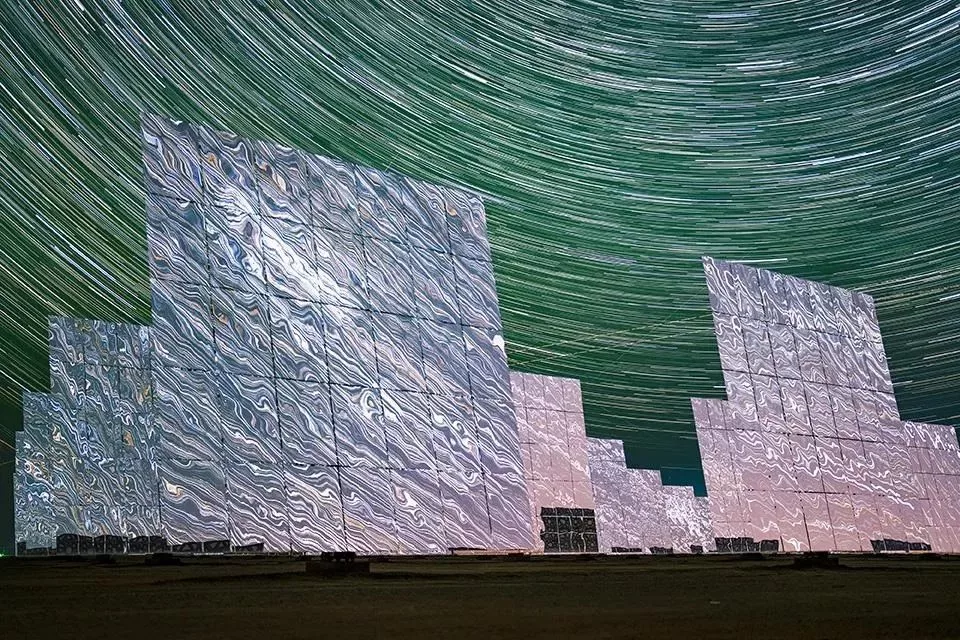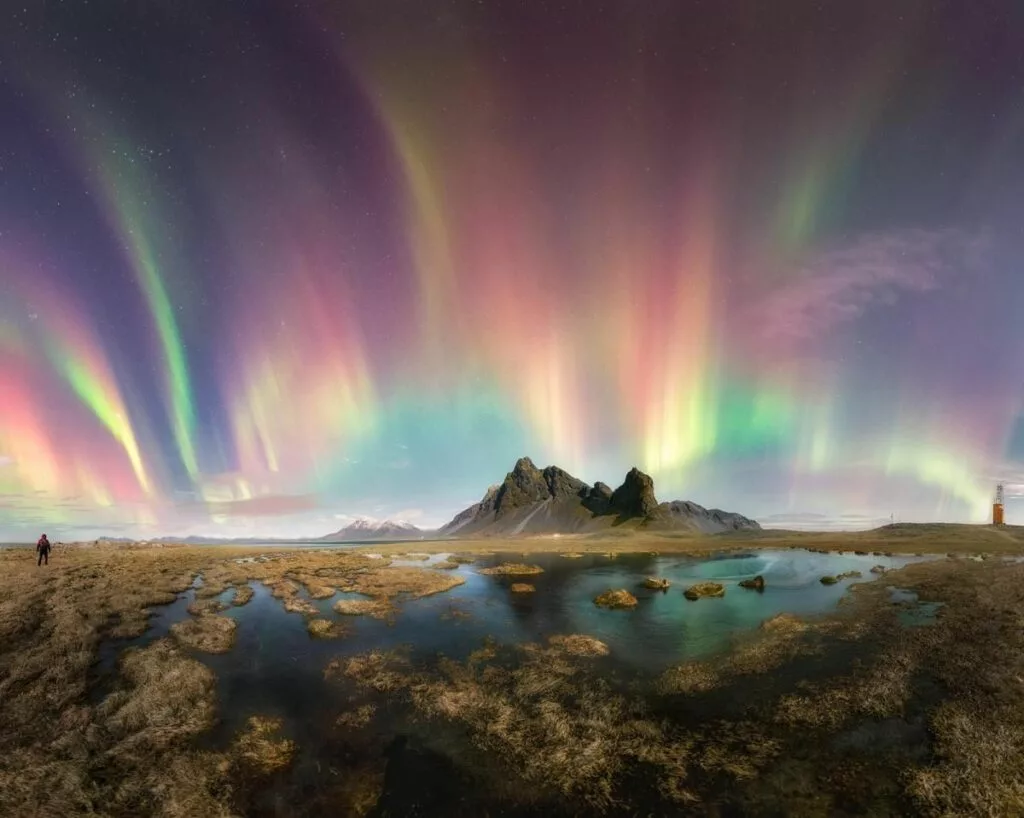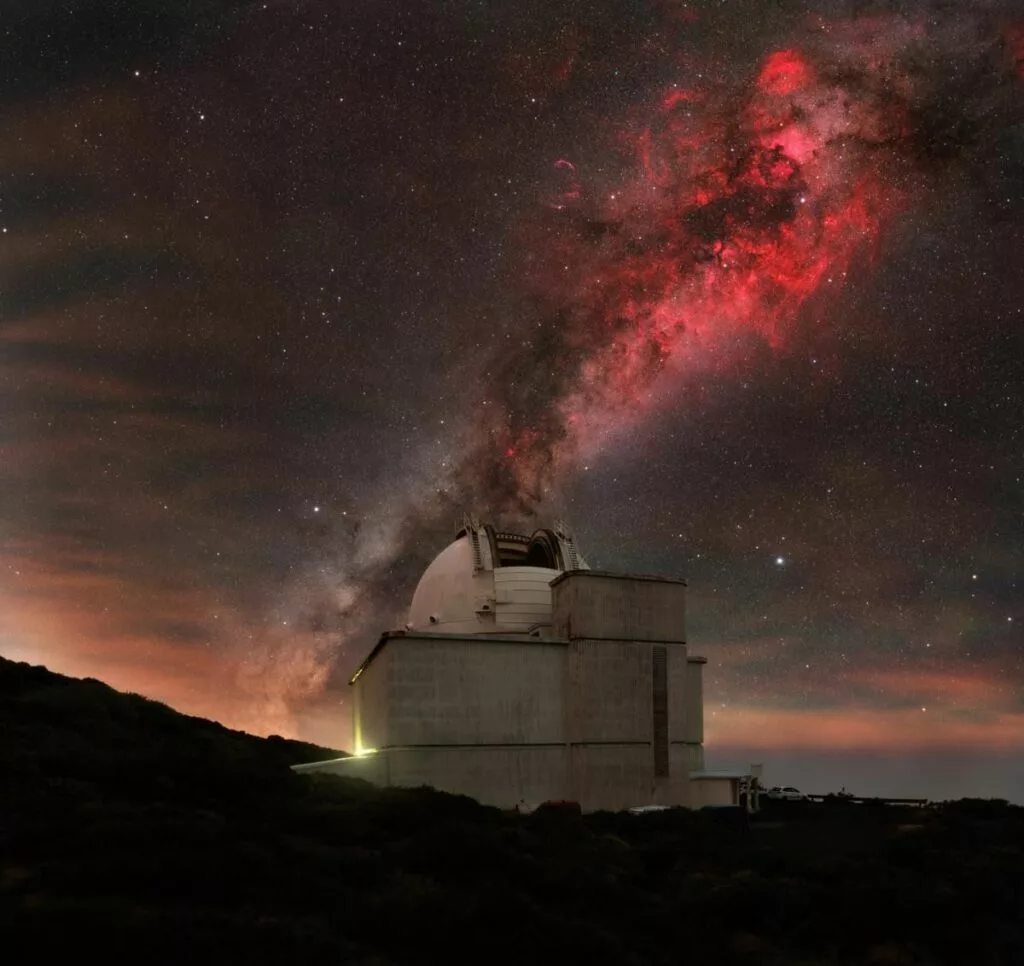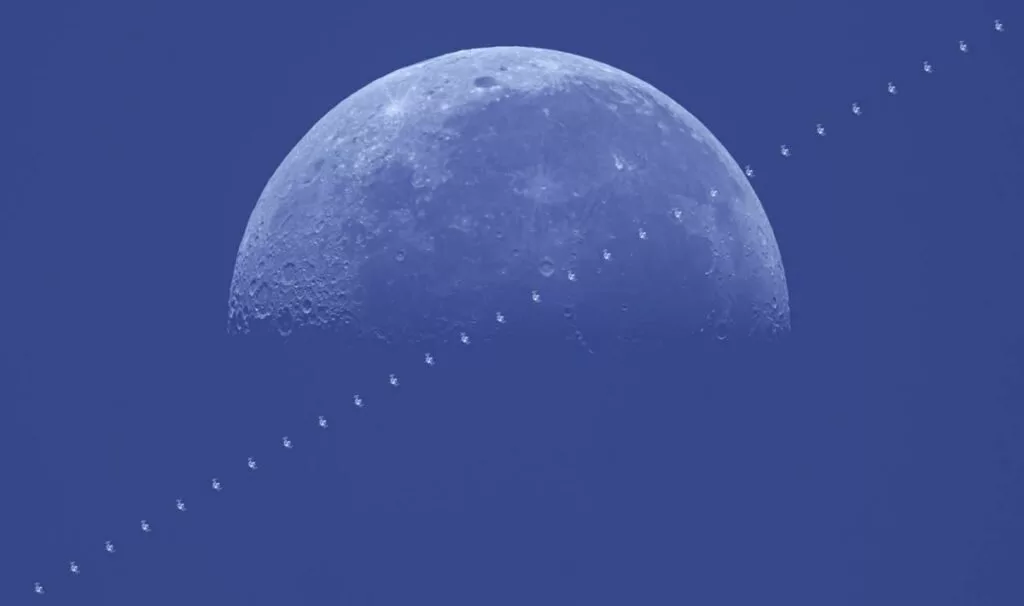Every year, we’re treated to amazing views of the solar system and beyond in honor of the prestigious Astrophotographer of the Year award. There are attractive pictures in the final list of nominees for this award.
This collection includes unique images of auroras, night sky views, solar system objects, views of the Milky Way and galaxies beyond.
The Astrophotographer of the Year Award is a project of the Royal Greenwich Observatory in collaboration with the BBC’s Night Sky magazine. This year is the 16th year of this competition and the winners will be announced in a special ceremony on September 12 (22 Shahrivar) and the winning pictures and a selection of the final candidates will be displayed in the National Maritime Museum in London.
In the following, we will see the 30 selected images of the final candidates for the best astrophotographer award in 2024.
Arctic dragon

This amazing aurora borealis, which looks like a dragon, is the result of a geomagnetic storm caused by the separation of a solar corona and collision with the Earth’s magnetic field. The photographer took this picture in “Arctic Henge”; One of the few places in Iceland that has a clear sky at night.
The galaxy eater among the best astrophotographer images of the year

Comet Nebula 4, or CG4, is a complex nebula and dust mass with a very peculiar shape, located in the southern constellation of the Ship’s Tail. The head of this galactic worm is approximately 1.5 light-years in diameter. This image is the result of the work of a group of astronomers who jointly used a powerful telescope in Chile.
Dance of Jupiter’s moons

This image shows the planet Jupiter surrounded by the moons Io and Ganymede. The many details of Jupiter and its moons are well revealed in this image.
Solar eruption

This image shows an eruption on the Sun’s surface, where material from the star is ejected from an active volcano. The photographer used dual filters to enhance the contrast of the image.
The universe in reflection

This photovoltaic power plant is a tower of molten salt, which has 12,000 supermirrors. During the day, an array of mirrors reflects sunlight into a central heat collection tower capable of reducing 350,000 tons of carbon dioxide emissions per year. At night, too, these mirrors reflect the light of nebulae, clusters, planets, the Milky Way and countless stars at different angles, making it difficult to distinguish between real and fake images.
Cosmic fireworks

This image of the Geminid meteor shower was captured in perfect conditions on the Spanish island of La Palma. At the peak of this shower, you can easily see two or three meteors per minute. In this panoramic image, the view of the Milky Way galaxy in winter is completely clear.
M100 and Ceres

In this image, the photographer was able to record “Ceres”, a dwarf planet in the asteroid belt between Mars and Jupiter, passing in front of the large galaxy M100. Ceres (the four bright points at the bottom of the galaxy) is brighter than this galaxy and moves at a high speed. To create this image, the photographer took several long exposure photos over the course of eight hours. The result is a spectacular view of the galaxy M100 or the “Hair Dryer Galaxy” and the fast movement of Ceres in front of it.
Moon Hunter and ISS

This image shows the International Space Station (ISS) as it passes in front of October’s full moon, or Orion Moon. This image was taken approximately 12 hours after a partial lunar eclipse and shows the moon’s striking beauty.
Run to Karina

This image shows a statue in the northwest of Namibia. This statue is one of several known as the “Lonely Men of Kaokoland” (Namibia’s old name). No one knows who placed these statues in this area. Behind the statue is the Carina Arm, one of the small arms of the Milky Way.
Imitation of the Milky Way

Astronomers suspect that NGC 6744 is similar to the Milky Way. This galaxy is located at a distance of 30 million light years from Earth. The colors of this galaxy are common in spiral galaxies: magenta color is due to the presence of emission nebulae, blue is due to the presence of large and young stars, yellow is the older stars and yellow-brown is the dust that surrounds the core and approaches it. In the night sky, NGC 6744 is about two-thirds the width of the full moon.
The scream of a dying star

“Cygnus supernova” is one of the favorite objects of astrophotographers. The title of this photo is a reference to Edvard Munch’s painting The Scream, making the Scream a symbol for the dead star that still echoes in space.
Blue detail of M45: Parvin cluster

The Parvin Cluster is a popular target for photographers in the Astrophotographer of the Year competition, but there are still many details to be discovered. In this image, the Parvin cluster is beautifully displayed.
Total solar eclipse

A sequence of total solar eclipses in Australia last year is the subject of this image in the Astrophotographer of the Year competition. In this image, you can see the Sun’s corona, the pink “phamsphere” or “chromosphere” and the “Bailey beads” (tiny bits of light). This image consists of seven photos with high exposure; One for the background and six for the chromosphere and grains.
Aurora’s touch

This image was taken at Castle Hill, New Zealand, and shows the Milky Way setting in the southern sky. The spectacular glow of this photo comes from the southern auroras (Aurora Australis). Since the aurora borealis is so far away, only its red parts are visible.
misty mountain

This image shows a close-up of IC 5070, or the Pelican Nebula. The gas and dust structures in the nebula are reminiscent of mountain fog at sunrise.
Show the Earth and the Milky Way

“Aso” in Kumamoto Prefecture, Japan is a name that refers to a total of five volcanic peaks. Often these peaks are also called “Five Mounts of Aso”. One of these peaks, Nakadake, has an active crater. In this composite image, the volcano and the sky are photographed separately.
M81, a large-scale spiral galaxy

M81, or the Bode Galaxy, is approximately 11.75 light-years away in the constellation Ursa Major. It is one of the brightest galaxies in the night sky and is named after its discoverer, Johann Elert Bode. In the background of this image we can see some “integrated flux nebulae” (IFN). Integrated flux nebulae are dust outside the galactic plane of the Milky Way illuminated only by the light of the Milky Way’s stars.
curve

This image from the Astrophotographer of the Year competition was taken on the beach in Santeeham, England, which is famous for its extensive seagrass beds, which attract many migratory birds. The subject in the picture is a dilapidated wharf built in World War II so that soldiers could transport sand mined from nearby pits by boat. The curved channel is similar to the path of the stars.
GUM 12: Gum Nebula

This is a small part of the “Sail Supernova” or Bubblegum Nebula that exploded 11,000 years ago. Its remnants are spread across a swath of the night sky eight degrees wide (that’s 16 times the width of the full moon), but they are very faint and require very long exposures to see them.
The demons of Mars among the images of the best astrophotographer of the year

This image was taken by the Mars Reconnaissance Orbiter (MRO). By cropping the image, the perspective changes and the landscape of Mars becomes something dark and mysterious.
Ancestral stones

This image shows the Milky Way along with Roques de García; Rocks inside Las Cañadas volcanic bowl in Teide National Park in Spain. A volcanic bowl is a circular depression in the ground that is formed after a volcanic eruption. This image is composed of two separate photos of rocks and the night sky.
A night with the Valkyries

A view of the Eystrahorn mountain at night with a KP7 storm. The said storm is a powerful geomagnetic storm that can create auroras and disrupt communication systems. The intensity of the storm has caused these various colors in the sky. The photographer compared these colors to a symbol of “Valkyries”. In Scandinavian mythology, Valkyries are warrior women who serve the gods and cannot be seen by humans. They search the battlefields to take the fallen soldiers to the presence of the gods.
The fiery dragon among the images of the best astrophotographer of the year

When the photographer captured this moving aurora, the result looked like a dragon’s head in the clear sky.
Night observations

This Astrophotographer Award-nominated image shows the Isaac Newton telescope at the La Palma telescope facility in Spain’s Canary Islands.
The passage of the International Space Station in front of the Moon per day

This image shows the International Space Station passing in front of the Moon at 55% brightness. The photographer of this image is another nominee for the best astrophotographer of the year award.
Himalayan palette

During the spring festival (Chinese New Year), the sun and the “altostratus” (altostratus) cooperated to create this great crown over the Himalayan mountain range. The result is a huge color palette over the snow-capped peaks.
Saturn with six moons

The narrowing of Saturn’s rings means Titan is closer to the planet than we’ve seen in a decade. In the center of the image, Tethys is hiding behind Saturn, while Rhea, Enceladus, and Mimas are on the left, and Dione is in the corner. It can be seen in the lower right. The planet’s shadow on its rings and the Encke and Cassini slits are other highlights of the image.
abandoned house

This image shows an abandoned house in the middle of the Namib Desert in Africa with the Milky Way above it.
Whale floating in the sun

This image shows the details of the surface of the sun. The photographer sees the strings on the left side of the sphere as a giant plasma whale that traverses the surface of the Sun.
Dust lines inside M104 (Mexico Cap Galaxy)

The intense glow of M104’s galaxy center often obscures details within the surrounding dust ring. In this image, dust appears to spiral into the core and fall in a thin layer inside the supermassive black hole. The bright and colorful stars in this image are actually closer to us and are located in the Milky Way galaxy.
We hope you enjoyed seeing these pictures. 🙂




